The fledgling United States established the first Mint in Philadelphia in 1792. At the time Philadelphia was the nation’s capital. Since then, the U.S. Mint has operated additional branches in San Francisco, Denver, and West Point. The U.S. Mint produced the country’s first official coins in 1793 and a few of these one cent coins are some of the rarest pennies today. Coin collecting did not become a popular hobby until the late 1850s, when the first small coins were produced. Over the years, coin collecting or numismatics, has exploded in popularity and driven the prices of rare pennies and other coins up. In general, the pennies on this list are so rare because very few examples have survived today and they’re often worth hundreds of thousands, even over a million dollars.
1793 Chain Large Cent
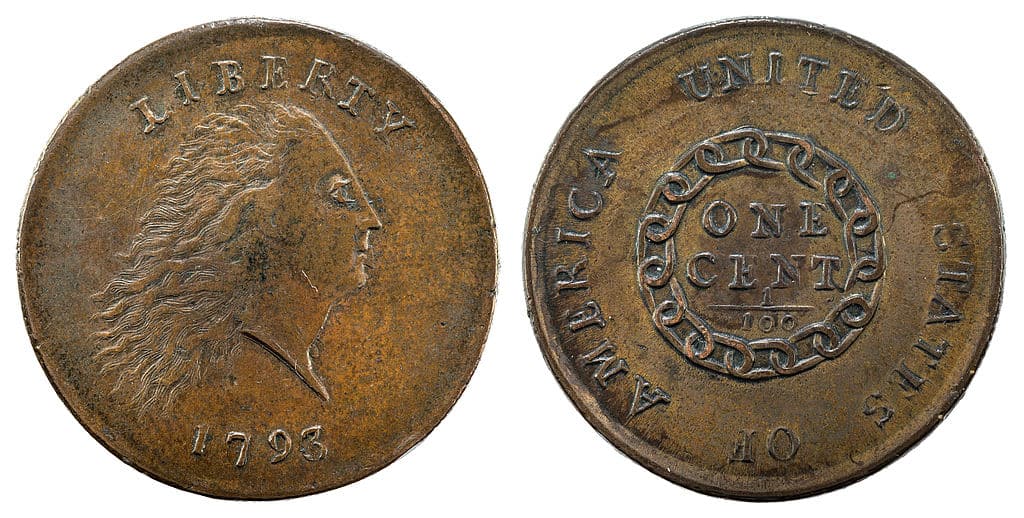
Estimated Number in Existence: about 1,500 (36,103 were made)
Year Created: 1793
Mint: Philadelphia
Value (based on highest price ever paid at auction): $2,350,000
The 1793 Chain Large Cent was the first official one cent coin ever created by the United States Mint in Philadelphia. Like the other two 1793 large one cent designs, the Chain Cent has an image of Lady Liberty on the front, but as the name implies, the back of the Chain Cent has a ring of chains. About 36,103 Chain cents were minted, but very few survive. There are only about 1,500 1793 Chain cents in existence today. Today, most 1793 Chain Cents are in poor condition, but a few have survived in mint condition. A number of 1793 Chain Cents have been sold for over $1 million with one selling for $2.35 million in 2015.
1793 Liberty Cap Large Cent
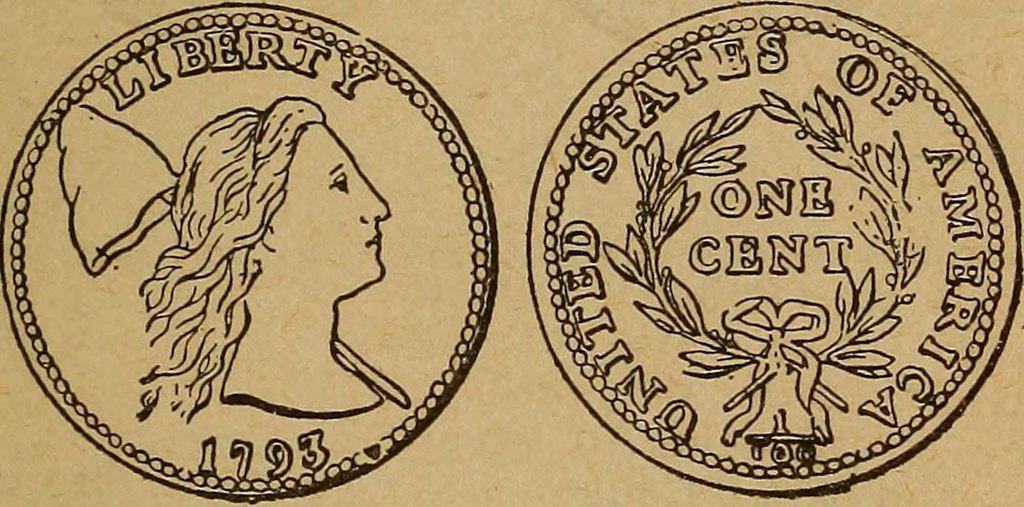
Estimated Number in Existence: Total number unknown; only 2 in mint condition (about 11,056 were made)
Year Created: 1793
Mint: Philadelphia
Value (based on highest price ever paid at auction): $1,450,000
Of the three large one cent coins produced in 1793, the Liberty Cap Large Cent is the rarest. Only about 11,056 Liberty Cap Large Cents were minted and only two in mint condition are known to exist today. The most ever paid for a 1793 Liberty Cap Large Cent was $1,450,000. The Liberty Cap Large Cent was one of the United States’ first pennies or one cent coins. It was the third one cent design that emerged in 1793 as the new Philadelphia mint was trying to decide on a permanent design for its new coinage. The Liberty Cap design was created by Joseph Wright, a portraitist whose most famous works were his 1783 paintings of George and Martha Washington. Wright was inspired by French medalist Augustin Dupre’s 1783 Libertas Americana Medal, which depicted Lady Liberty as a young woman with her hair flowing in the wind.
1856 Flying Eagle Cent
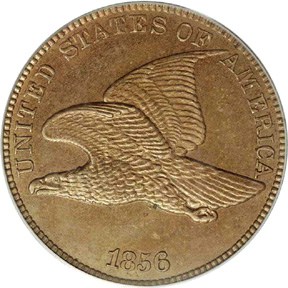
Estimated Number in Existence: sources vary – between 1,500 to about 2,150 were made; up to 3,000
Year Created: 1856
Mint: Philadelphia
Value (based on highest price ever paid at auction): $172,50
The 1856 Flying Eagle Cent is one of the most highly sought after pennies by collectors. In fact, the 1856 Flying Eagle penny is so popular that it is responsible for popularizing coin collecting in the United States. The Flying Eagle Cent was smaller than previous one-cent coins, which were about the size of a half dollar and unpopular for being so large. Initially, about 634 1856 Flying Eagle cents were produced as presentation pieces and given to members of Congress and other dignitaries. A few more of the Flying Eagle Cents were made and given to other influential people. After the smaller coins were approved by Congress, about 3,000 more 1856 Flying Eagle Cents were produced and sold to collectors and put into circulation. The 1856 Flying Eagle Cent is highly valuable/collectible because of its importance in American history.
1909 VDB Matte Proof Lincoln Cent

Estimated Number in Existence: less than 200 (1,194 were made)
Year Created: 1909
Mint: Philadelphia
Value (based on highest price ever paid at auction): $258,500
The 1909 VDB Matte Proof Lincoln Cent is the rarest of all matte proof pennies produced between 1909 – 1916. About 1,194 1909 matte proof pennies were made with the designer’s initials, V.D.B., but for an unknown reason less than 200 are known to exist today. Although the 1909 VDB Matte Proof is the rarest matte proof penny today, two other coins in the matte proof series, 1916 and 1915, had fewer numbers created than the original 1,194 1909 VDB Matte Proofs. Today there are more 1916 and 1915 Matte Proofs out there than the 1909. In 2010, a 1909 VDB Matte Proof penny was sold for a record $258,500.
1969-S Doubled Die Obverse
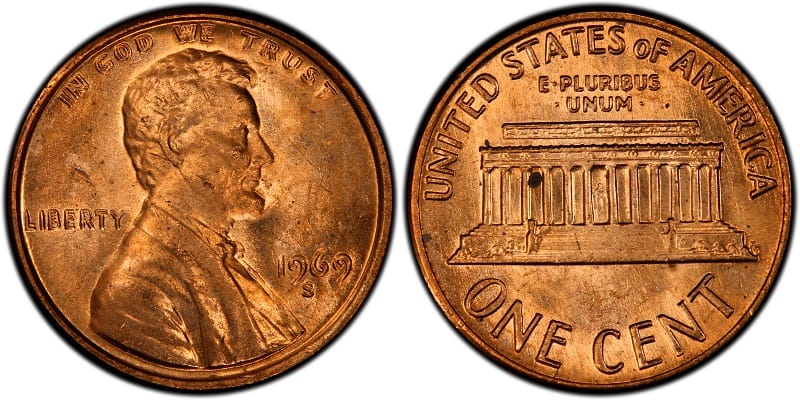
Estimated Number in Existence: 31 (less than 100 were made)
Year Created: 1969
Mint: San Francisco
Value (based on highest price ever paid at auction): $126,5
The 1969-S Doubled Die Obverse penny has an interesting story that links it to several counterfeit pennies made in the same year that also feature doubled die markings (the words on the front of the penny were stamped twice and misaligned causing a “shadow” effect). Two men named Roy Gray and Morton Goodman began producing a couple thousand fakes and sold them to a collector before being turned over to the Secret Service. The Secret Service began recovering as many of the fakes as they could and in 1970, the first real 1969-S Doubled Die Obverse pennies were discovered by Cecil Moorhouse and Bill Hudson. As the Secret Service recovered the fakes, they found several authentic doubled die pennies, but assumed they were fake and had them destroyed, which makes them even rarer. It is believed that only about 100 real 1969-S Doubled Die Obverse pennies were created and only about 31 have been authenticated and registered over the years.
1943 Bronze Lincoln Penny
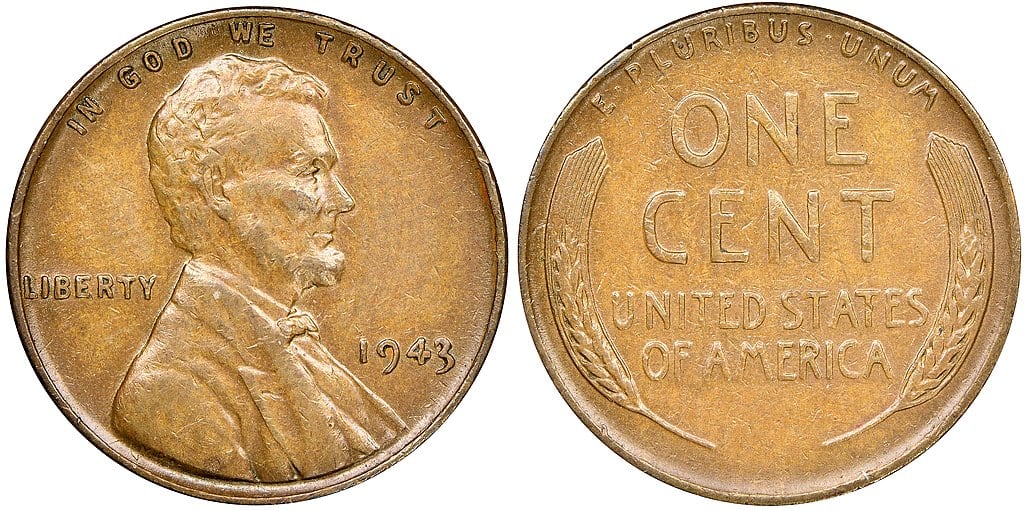
Estimated Number in Existence: about 15
Year Created: 1943
Mint: Philadelphia and San Francisco
Value (based on highest price ever paid at auction): $1,000,000
During World War II, the government needed all the copper in the United States to make ammunition for the war. Due to this, in 1942 the U.S. Mint stopped using copper and made steel pennies for the first and only time in 1943. However, during the transition to the new steel plates a small number of regular copper coated bronze pennies were struck in 1943, mostly at the Philadelphia and San Francisco mints. There is one rare example from Denver, that is the rarest penny on this list. Only about 20 of these bronze pennies were produced at the Philadelphia and San Francisco mints. About 15 of these rare 1943 bronze pennies are known to exist today. In 2012, one of these 1943 bronze pennies from San Francisco was sold for $1 million to the same man, Bill Simpson, co-owner of the Texas Rangers, who bought the 1943 Denver bronze penny from $1.7 million.
1943-S Lincoln Cent Struck on Bronze
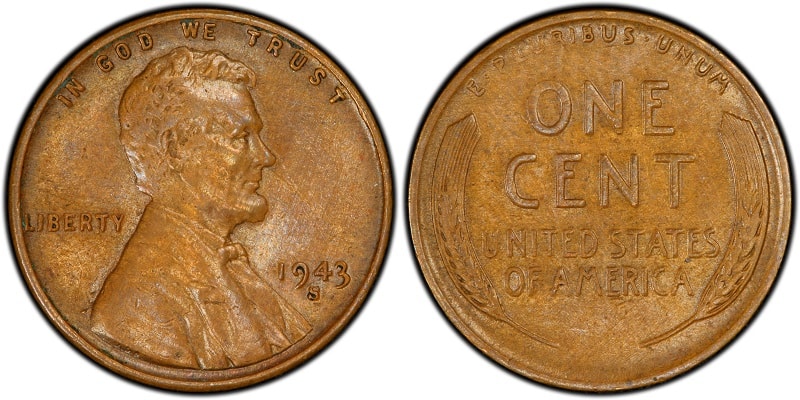
Estimated Number in Existence: 6
Year Created: 1943
Mint: San Francisco
Value (based on highest price ever paid at auction): $282,000
The 1943-S Lincoln Cent that was accidentally stuck on a bronze planchet is such a rare error that only six known examples have been confirmed by experts. All pennies in 1943 were supposed to be made on zinc plated steel planchets but a small number of errors occurred at the San Francisco mint as well as the Denver mint (those coins are also on this list). According to one widely believed theory the 1943-S bronze pennies were created when a few leftover bronze planchets from 1942 went unnoticed and these pennies were mixed in with the regular zinc pennies. A few of the known 1943-S bronze Lincoln Cents have been sold at auction for large sums. In 2016, one 1943-S bronze Lincoln Cent was sold for a whopping $282,000!
1944-S Lincoln Steel Penny
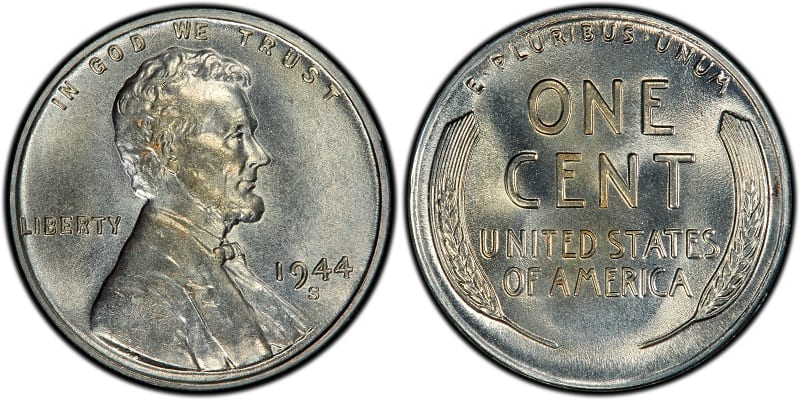
Estimated Number in Existence: 2
Year Created: 1944
Mint: San Francisco
Value (based on highest price ever paid at auction): $282,000
Like most of the pennies on this list, the rarity of the 1944-S Lincoln Steel Penny is due to it being an accidental error. In 1944, pennies were supposed to revert back from steel to copper/bronze. The rare 1994 steel pennies were made with left over zinc-coated steel planchets from 1943. About 35 steel pennies were made at all three mints, but only two steel pennies from San Francisco are known to exist. With very little left in existence, the 1944-S Lincoln Steel Penny is the second rarest penny in the United States. Due to its rarity, the 1944 steel pennies are often counterfeited. The best way to tell if a steel penny is real is to see if it is magnetic.
1943-D Lincoln Bronze Cent

Estimated Number in Existence: 1
Year Created: 1943
Mint: Denver
Value (based on highest price ever paid at auction): $1,700,000
The 1943-D Lincoln Bronze Cent is so rare that only one of these pennies is known to exist, making it the rarest penny in the United States. The origins of this extremely rare bronze penny are shrouded in mystery, but it is believed that the penny was secretly struck by a former Denver Mint employee. According to coin experts, the employee used a leftover bronze planchet from 1942 and made the one penny and kept it for years until passing it on to one of his children. A conflicting story says that the rare 1943 Denver bronze penny was created by John R. Sinnock, chief engraver of the US Mint at the time. Regardless of how this penny came about, it is so rare that it was sold at auction in 2010 for $1,700,000.
This article originally appeared on Rarest.org.
More from Rarest.org
1934 Mercury Dime Value Guide
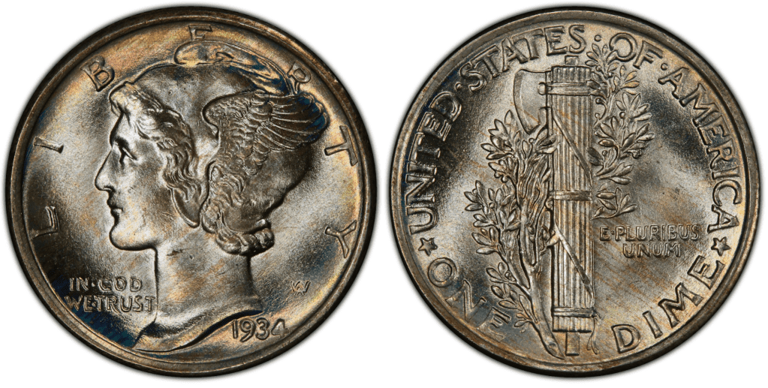
The Mercury Dime, despite its small size, might be the most elegant coin the US Mint has ever produced. It is very amazing that a coin this little could have such a complex and beautiful design. Read More
1953 Franklin Half Dollar Value Guide
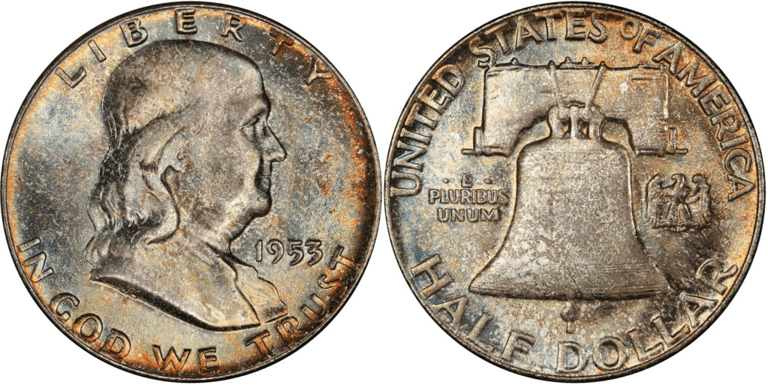
The 1953 Franklin Half Dollar is a well-known coin in the U.S.A. with a face value of $0.50 and is made of 90% silver and 10% copper. All the coins minted from 1948 to 1963 have the same composition. Read More
1997 Kennedy Half Dollar Value Guide
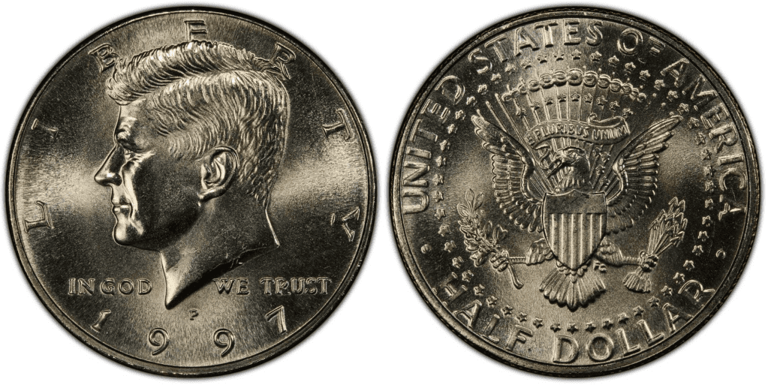
The 1997 half dollar is part of the Kennedy half dollar series first issued by the US Mint in 1964. In its first year of production, the coin was made of 90% silver and 10% copper. Read More
